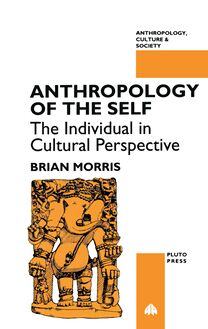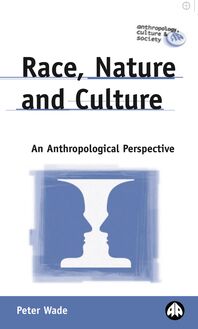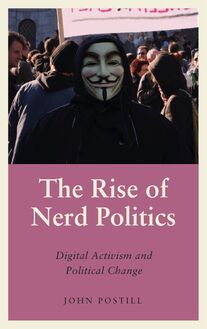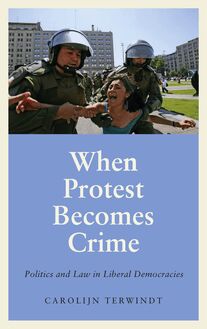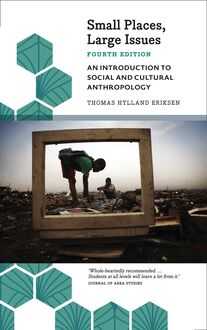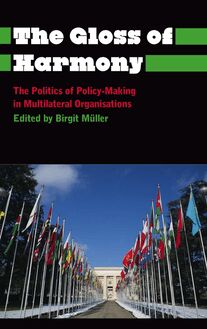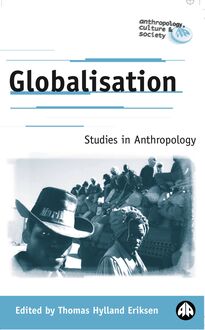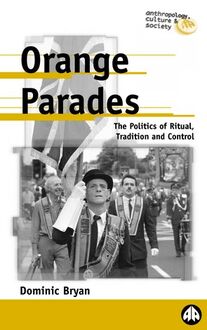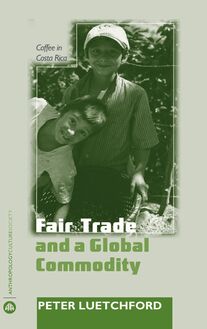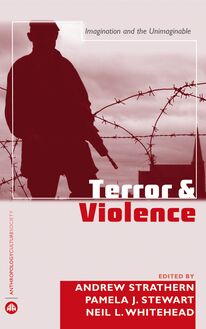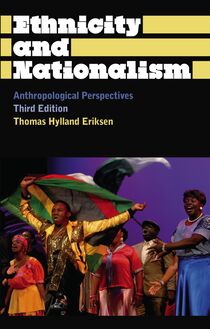-
 Univers
Univers
-
 Ebooks
Ebooks
-
 Livres audio
Livres audio
-
 Presse
Presse
-
 Podcasts
Podcasts
-
 BD
BD
-
 Documents
Documents
-
- Cours
- Révisions
- Ressources pédagogiques
- Sciences de l’éducation
- Manuels scolaires
- Langues
- Travaux de classe
- Annales de BEP
- Etudes supérieures
- Maternelle et primaire
- Fiches de lecture
- Orientation scolaire
- Méthodologie
- Corrigés de devoir
- Annales d’examens et concours
- Annales du bac
- Annales du brevet
- Rapports de stage
La lecture à portée de main
157 pages
English
Découvre YouScribe en t'inscrivant gratuitement
Je m'inscrisDécouvre YouScribe en t'inscrivant gratuitement
Je m'inscris
Obtenez un accès à la bibliothèque pour le consulter en ligne
En savoir plus
En savoir plus
157 pages
English
Obtenez un accès à la bibliothèque pour le consulter en ligne
En savoir plus
En savoir plus

Description
The relationship between human beings and their gods lies at the centre of all questions of identity, individual and collective. Nadia Lovell examines how religious feelings reflect notions of personhood and belonging, and how religious involvement can transform gender relations, by focusing on cults of Vodhun (voodoo) possession among the Watchi in Southern Togo.
Using this detailed ethnographic study as a point of departure she offers a fascinating insight into the complex interplay between religion, gender, ethnography and globalisation.
Lovell argues that the relationship of men and women to the Vodhun is one of mutual dependency: on the one hand human beings will gods to exist; on the other hand, gods embody themselves in human beings, especially women, through possession. Possession, according to Lovell, implies not only affliction, but the manifestation of creative potential through which women can express multiple identities -- a process through which concepts of gender are both confirmed and dismantled.
Looking in particular at the role of the devotees, Lovell presents an enticing account which offers an important contribution to the study of religion, gender and society.
1. Introduction
2. Book and Place, Persons and Gods
3. Making Gods, Knowing Gods
4. Grounding Vodhun, Untying Gender
5. Healing Modernities, Engendering Difference
Bibliography
Index
Using this detailed ethnographic study as a point of departure she offers a fascinating insight into the complex interplay between religion, gender, ethnography and globalisation.
Lovell argues that the relationship of men and women to the Vodhun is one of mutual dependency: on the one hand human beings will gods to exist; on the other hand, gods embody themselves in human beings, especially women, through possession. Possession, according to Lovell, implies not only affliction, but the manifestation of creative potential through which women can express multiple identities -- a process through which concepts of gender are both confirmed and dismantled.
Looking in particular at the role of the devotees, Lovell presents an enticing account which offers an important contribution to the study of religion, gender and society.
1. Introduction
2. Book and Place, Persons and Gods
3. Making Gods, Knowing Gods
4. Grounding Vodhun, Untying Gender
5. Healing Modernities, Engendering Difference
Bibliography
Index
Sujets
Informations
| Publié par | Pluto Press |
| Date de parution | 20 novembre 2002 |
| Nombre de lectures | 1 |
| EAN13 | 9781849641296 |
| Langue | English |
Informations légales : prix de location à la page 0,6250€. Cette information est donnée uniquement à titre indicatif conformément à la législation en vigueur.
Extrait
CORD OF BLOOD
Possession and the Making of Voodoo
NADIALOVELL
P Pluto Press LONDON • STERLING, VIRGINIA
First published 2002 by PLUTO PRESS 345 Archway Road, London N6 5AA and 22883 Quicksilver Drive, Sterling, VA 20166–2012, USA
www.plutobooks.com
Copyright © Nadia Lovell 2002
The right of Nadia Lovell to be identified as the author of this work has been asserted by her in accordance with the Copyright, Designs and Patents Act 1988
British Library Cataloguing in Publication Data A catalogue record for this book is available from the British Library
ISBN 0 7453 1842 8 hardback ISBN 0 7453 1841 X paperback
Library of Congress Cataloging in Publication Data A catalogue record for this book is available
10
9
8
7
6
5
4
3
2
1
Designed and produced for Pluto Press by Chase Publishing Services, Fortescue, Sidmouth EX10 9QG Typeset from disk by Stanford DTP Services, Towcester Printed and bound in the European Union by Antony Rowe, Chippenham and Eastbourne, England
CONTENTS
1. Introduction 2. Blood and Place, Persons and Gods 3. Making Gods, Knowing Gods
4. Grounding Vodhun, Unmaking Gender 5. Healing Modernities, Engendering Difference
Notes Bibliography Author Index Subject Index
1 18 48 72 100
127 139 148 150
1
INTRODUCTION
I arrived for the first time in Momé Hounkpati, the village which was 1 to be my home for the next 12 months, in early October 1989. The original aim of this research was to concentrate on the ‘couvents de féticheuses’, as they have been described in early Francophone literature (Garnier and Fralon 1951, Verger 1957), a term now readily adopted by most educated Togolese to describe the compounds 2 associated with shrines where initiation takes place. Voodoo ‘cults’, as they are often referred to in Western popular discourses, have often been represented as a religion of darkness, fear, black magic and malevolent mysticism, where images of zombies, the walking living dead or bloody sacrifices, including, it is sometimes said, human victims have taken pride of place. A plethora of films, articles and documentaries has served to reiterate the wildness of voodoo in the Western imagination. Coffee table books further reinforce such rep-resentations, despite their sometimes semi-academic credentials, making use as they do of a wealth of powerfully striking photographs, taken from ‘real events’, and evocative language. Yet, as we shall see, drama, play and display are indeed also part and parcel of the practice of religiosity. The ‘making of voodoo’ takes place at many levels, and these deities linger in the imagination under many guises. Garnier and Fralon, writing as colonial administrators in Togo in the 1950s, provide colourful accounts of how young women are tattooed, scarified and clad in ways which clearly demarcate them from other members of their communities. The female devotees are also described as embodying the terrifying moral properties of the gods: prone to possession, theirs can be a vindictive business, and they are said to strike terror in those who refuse to abide by their taboos. Equally, they are prone to desecration and, consequently, are often punished by violent death if they fail to comply with the exigencies of their deities. Not surprisingly however, Garnier and Fralon provide little detail as to how such initiation fits into the wider scheme of sociality, nor do they discuss how the devotees’ overt display of religiosity relates to the presence of white colonisers on their territory. A product of their time and conditioning, the drawings and illustrations in Garnier and Fralon’s book display the typical attributes of the exoticised, and colonised, subject: ‘fetish’
1
2Cord of Blood priests playing on drums encircled by humans skulls, devotees with pythons draped around their necks, half-naked female bodies taking to the streets in trance... 3 Verger’s scholarly work on Yoruba orisa and Fon vodun appears only a few years later (1957). With its heavy emphasis on initiatory processes, Verger firmly bases his data in the religious sphere, providing vivid and detailed accounts of the symbolic significance of religious practice and mythology, but still leaving a taste for more, for how these institutions tally with other aspects of social interaction. Yet another early ethnography is provided by Maupoil (1943), an ethnographer and colonial administrator in Benin whose authoritative account of Fa divination displays his masterly grasp of the mathematical aspects of divinatory practice. Again, little social context was provided relating to the use made of divination in everyday (or, indeed, specific) social contexts, or relating to the background of diviners themselves, and making little mention of the religious institutions surrounding divination and linking it to the ‘voodoo’ complex. At a time when life-histories were not yet in fashion, the systematic cataloguing of practice was very much favoured. Augé’s more recent work (1988) derives an obvious inspiration from Verger, viewing religious practice in this part of Africa as an expression of morality and ideology. 4 Vodhunare treated by Augé as, as these deities are termed locally, a relatively homogeneous complex: explanation and analysis make little differentiation between various groups, and vodhun in Benin and Togo are amalgamated to become expressions of shared cosmo-logical and mythological beliefs. While it is the case that vodhun as 5 belief, practice and religious complex is indeed present from Nigeria to present-day Ghana, the continuities it displays and which serve to enhance a sense of shared identity are paired with important differences used to mobilise ethnic differentiation. Vodhun can thus hardly be treated as homogenous practice or ideology. Thus armed with theoretical reflections on the mostly francophone literature on this region, and an intellectual training firmly based within British academic tradition, I had originally intended to attempt a wider contextualisation of vodhun religion in everyday practice, while simultaneously pursuing a particular interest in the ‘couvents de féticheuses’ which seemed to be frequently mentioned in the literature relating particularly to Benin and Togo. This, I thought, would constitute the focus of my work, as it delved into the depths of gender issues, while also relating to wider discourses of religious practice and, I suspected, medical knowledge. The latter was, originally, an idea formulated as the result of inference, rather than being explicitly stated in other accounts on this region. Moreover, if the expression and creation of
Introduction3 gender identities featured prominently in vodhun, how was this to be interpreted in terms of ‘modernity’, in view of the flow between historical context and present-day sociality? My interest in vodhun in Togo among a group of Watchi, rather than the Fon of Benin, a far more ‘traditional’ choice for such a study, was influenced partly by the relative scarcity of ethnographic interest in and, consequently, written material on Togolese vodhun, and partly by the rather diverse and agitated history of migration of various groups in the south and south-east of this country. How have these movements influenced religious institutions and in what ways, if at all, have religious institutions come to reflect historical movements? Had this group of Watchi, whose very existence has been predicated upon violent historical upheavals and migrations, spanning territories far to the east and the west of current Watchi 6 settlements, acquired specific vodhun so as to demarcate its specific identity and territorial belonging? If the Watchi, Mina and Adja in what is now contemporary Togo had indeed originated from both western and eastern locales, what defining features did they use in order to demonstrate both affinity and difference from other neigh-bouring groups, such as the politically more powerful Yoruba and Fon polities to the east, and the Anlo-Ewe, Guen and Asante to the west, with whom they were all clearly historically associated? It has been pointed out to me more than once that the Fon hold the knowledge about ‘real vodhun’, and that the Ewe to their west are mere ‘imitators’; that the royal court among the Fon in Benin provided a far greater interest and focus for ethnographic study, specifically when it came to investigating the links between vodhun as religious institution and kings as holders of political power (Bay 1995). While it is true that the Fon have displayed a far greater tendency than the Watchi towards centralised states and political institutions organised around specific monarchies, it is precisely out of the ‘blurred’ status of the Ewe as a whole that my interest grew. The Watchi are separated from the Fon by the Mono River, which runs approximately 15 km to the east of the site of my fieldwork. With such proximity, was it indeed the case that the Watchi considered themselves as having a separate identity and, if so, how explicitly formulated would such discourses be? If implicit, what modes of expression would they find? In other words, could the fact that the Fon and Ewe generally share the same overall vodhun pantheon be good grounds for their amalgamation in analytical and theoretical terms? While political institutions are acknowledged as being different in character, religious ones have been automatically subsumed under the hegemonic labelling of ‘vodhun’. However, while several historians had focused directly on the history of migrations which feature so prominently in the past of this region,
4Cord of Blood my intention was very much to concentrate on religious institutions in Watchi sociality. Little did I know at the time that this would also make me delve into the depths of Watchi kinship in rather unexpected ways. The crude divide between what have traditionally been termed, in anthropological theorising, the matrilineal Asante and patrilineal Fon and Yoruba, provided a cradle for intermediate groups, such as the Watchi, to establish religious institutions with a decidedly composite outlook. The accounts included in this book should provide at least partial answers to these issues, although the material is by no means complete, exclusive nor, indeed, hegemonic. Nor is this study itself intended as an explicit comparative study between the various Ewe groups represented in the numerous settlements along the coasts of contemporary Ghana, Togo and Benin. Rather, it draws its inspiration from a dialogue which engaged me with several male and female healers and ‘féticheuses’ (or initiates/devotees of vodhun secret societies, as I shall hereafter refer to them), a dialogue which centred primarily on how these specialists conceived of their particular identities as people in possession of specialised and exclusive knowledge of vodhun deities and cosmology. Healers of the vodhun, and others who acknowledged some kind of affiliation with the gods, often vied for ever closer association with these cos-mological entities in their quest for greater power, and healing influence in particular. Contesting claims for power had obvious social repercussions. Paradoxically, affiliation to shrines seems to have acted as an acknowledged booster for such claims while also representing a powerful levelling mechanism, since vodhun are also part of a discourse where equality is emphasised, and where the com-plementary character of deities, and the concomitant identities of associated humans, is also propounded. In lengthy conversations with a number of informants, friends and, sometimes, acquaintances openly opposed to my probing inquiries, I was also made to share in the perceptions others had of the vodhun, of the ‘priests’, ‘priestesses’, ‘devotees’, healers and others considered closely associated with these deities. The consid-erations of those directly involved in ‘worship’ are as much at play in the making of religion as are the views of those on the margins of openly religious activity. Interestingly, however, vodhun feature as apotentialinfluence in most people’s lives, as unexpected events might bring the deities into focus where they were previously allocated only a rather insignificant role. Thus there appears not to be a hegemonic discourse around vodhun, and the importance afforded them will depend on life events but also, undoubtedly, personal ambition in some cases and relational conflicts in others. Nevertheless, while it is probably safe to assert that vodhun, as a
Introduction
5
religious complex, permeates the lived world of most Watchi, including that of the few who have adopted monotheistic religions 7 such as Christianity, deities tend to move in and out of people’s lives depending on factors such as life-cycle, professional prospects and, not least, the shifting contexts of gender identities.
A FIELD
Upon my first arrival in Lomé, endowed with my research visa and residence permit, I set about looking for my future settlement. Etienne A., to whom I had just been introduced by a mutual friend, proved an invaluable support. Trained in sociology at the Université du Bénin, he had a keen interest in anthropology and its concomitant methodological approaches, including ethnographic 8 fieldwork. He worked as a research assistant at ORSTOM, and had for many years acted as the fieldwork assistant of a prominent French anthropologist working in Togo. Perhaps a reflection of differing colonial and postcolonial anthropological traditions, he expressed great surprise at my idea of residingin situfar from the capital, rather than paying regular visits to my chosen field site during the year, especially since I had simultaneously already been offered an office as a base at the Institut d’Études Démographiques in Lomé. Within a few days, Etienne and I set off to visit friends and acquaintances of his in several villages located in the region near Vogan, considered the capital of vodhun in Togo. By this time, after just one or two weeks in Lomé, I had become slightly cautious about all the advice directing me towards the south-east, the ‘real home’ of vodhun. The well-intentioned advice propounded by expatriates who had been in Togo for a long time appeared to confirm essentialising discourses about the bounded and untouched nature of some societies. Those in the south-east seemed to fit this mould perfectly. They had, I was told, remained more or less untouched by colonial encroachment, and, if I was looking for vodhun, this is where I would find it. The difficulty remained, nev-ertheless, of ascertaining to what extent this neo-colonial iterative discourse about the otherness of natives was replicated in the local imagination. Among many Togolese, and particularly city dwellers, certain areas such as the south-east are indeed perceived as the cradle of unblemished religious fervour, a reputation which is itself cultivated by vodhun priests in this region, as I was to learn later. My scepticism led me to decide, at least temporarily, on another course of action, and I left Lomé for a few days to visit newly made acquaintances in the plateau region around Mont Agou, the location of several Ewe settlements bordering on Ghana, and strongly
6Cord of Blood influenced by Christianity. The contrast with the south-east, in many ways, could not have been more marked: geographically and ecologically, the plateau region is lush, covered in forest vegetation, with relatively dry, crisp air. Antheaume (1982) attributes the almost complete conversion of local populations to Christianity, in colonial times, to the very early arrival of missionaries and to their concen-tration in this region. Its cool dry climate, and the relative absence of severe forms of malaria, allegedly made it more bearable for these settlers than any other part of the country. The seemingly easy conversion to Christianity, however, must be attributed to more complex factors than the sheer number of missionaries in the area 9 (see Debrunner 1965). Looking more closely at the syncretic embrace of Christianity and vodhun in the region of Mont Agou might have offered a valuable alternative focus to my research, and has indeed been the subject of other studies in the region primarily on the Ghanaian side (Meyer 1995, Mullings 1984). However, I decided against this, as I came to wonder how the notion of interaction, resistance and contestation between different fields of knowledge and influence came to be expressed instead in the context of a religious complex (vodhun) that did its best to set itself apart from Christianity. In other words, how could vodhun practices in this area make such claims on authenticity, and cast themselves as being ‘close to tradition’ in the popular imagination, when they had played and still continued to play such a prominent role in the interface between colonialism and resistance, and, previously, in the slave trade? If the strength of ‘tradition’ is partly predicated on its relationship with a powerful counterpart, as has indeed been the case with vodhun, how did the present circumstances come to crystallise? (For more on these debates, see Comaroff and Comaroff 1993, Kramer 1993, Masquelier 1993, Stoller 1995). The site of fieldwork was situated approximately 80 km north-east of Lomé, some 40 km from the sea and 15 km from the border with Benin. The nearest main road passed through the neighbouring village of Amegnran. A dirt road of some 3 km led from there to a central marketplace surrounded by a group of hamlets known col-10 lectively as the village of Momé Hounkpati. From this marketplace, several other paths led away to other hamlets and villages at some distance. The central hamlet within which the marketplace itself is situated was most commonly referred to as Atikesimé, and it was here that I settled the first time. Atikesimé was also the residence of the chief of the collective village of Momé Hounkpati. Within three weeks, I was paying regular visits to informants in the hamlets of Balime, Boƒeme and Dzokoƒe.
Introduction7 I lived in what was commonly known as Kpaka’s household, and Huntosudi, Hundalodji, Atsufui and Sufuhunde, Kpaka’s four wives, were my closest neighbours and companions. His senior wife was a prominent trader who had left him several years previously to live and trade in Lomé. She visited him in the village only occasionally, during funerals, or other social and ritual occasions requiring her presence. My hut, situated inside the compound that constituted Kpaka’s household, had previously been occupied by Kpaka’s father, who had died some years earlier. Unbeknown to me at the time, Atsufui, Hundalodji and Huntosudi had previously been using it as a cooking place, and lost this valuable asset upon my arrival. I was soon introduced to both male and female healers. Yet it originally proved more difficult to convince women about the nature of my work and my interest in theirs. I gradually managed to establish fruitful relationships with a number of healers of both sexes, some of whom accepted me as a constant fixture at their shrines and homes for the full period of fieldwork, while others provided more intermittent contacts. I attended their practice when they received patients, either in their home or waiting at the vodhun’s shrine for people to arrive. Some healers travelled to see patients who had called for them for treatment, and I accompanied the healer on his or her journey on such occasions whenever possible. I also conducted interviews with patients and healers, whom I saw at their homes after treatment had been dispensed. As most healing sessions start at dawn – coolness being a prerequisite for the treatment of many ills and ailments – I would often return to my hut by mid-morning, having spent several hours in the company of healers where the customary drink ofsodabi, the local gin, was offered in rounds several times over. The rest of the day was often spent in the company of neighbours and friends, where I honed my skills at recording genealogies, primarily and originally as a helpful and practical personal mnemonic device to keep track of social relations. I had looked upon this as a pragmatic exercise. Little did I realise then how intimately intertwined the spheres of kinship (in the rather traditional and wooden anthropological sense) and medicine would prove to be. At the core of my interest lay the relationship between women’s and men’s knowledge, whether both sexes had equal access to vodhun deities as such and, by extension, whether they had access to the same aspects of knowledge about vodhun. Three of my female informants were leaders of vodhun shrines, and had also been initiated into ‘secret societies’. Mesigatoyi, who headed a shrine for vodhun Aveyibo (Black Forest) featured prominently in the first six months of my fieldwork, but became increasingly withdrawn as my own understanding of vodhun increased, and as my questions
-
 Univers
Univers
-
 Ebooks
Ebooks
-
 Livres audio
Livres audio
-
 Presse
Presse
-
 Podcasts
Podcasts
-
 BD
BD
-
 Documents
Documents
-
Jeunesse
-
Littérature
-
Ressources professionnelles
-
Santé et bien-être
-
Savoirs
-
Education
-
Loisirs et hobbies
-
Art, musique et cinéma
-
Actualité et débat de société
-
Jeunesse
-
Littérature
-
Ressources professionnelles
-
Santé et bien-être
-
Savoirs
-
Education
-
Loisirs et hobbies
-
Art, musique et cinéma
-
Actualité et débat de société
-
Actualités
-
Lifestyle
-
Presse jeunesse
-
Presse professionnelle
-
Pratique
-
Presse sportive
-
Presse internationale
-
Culture & Médias
-
Action et Aventures
-
Science-fiction et Fantasy
-
Société
-
Jeunesse
-
Littérature
-
Ressources professionnelles
-
Santé et bien-être
-
Savoirs
-
Education
-
Loisirs et hobbies
-
Art, musique et cinéma
-
Actualité et débat de société
- Cours
- Révisions
- Ressources pédagogiques
- Sciences de l’éducation
- Manuels scolaires
- Langues
- Travaux de classe
- Annales de BEP
- Etudes supérieures
- Maternelle et primaire
- Fiches de lecture
- Orientation scolaire
- Méthodologie
- Corrigés de devoir
- Annales d’examens et concours
- Annales du bac
- Annales du brevet
- Rapports de stage
Signaler un problème
YouScribe
Le catalogue
Le service
© 2010-2024 YouScribe
